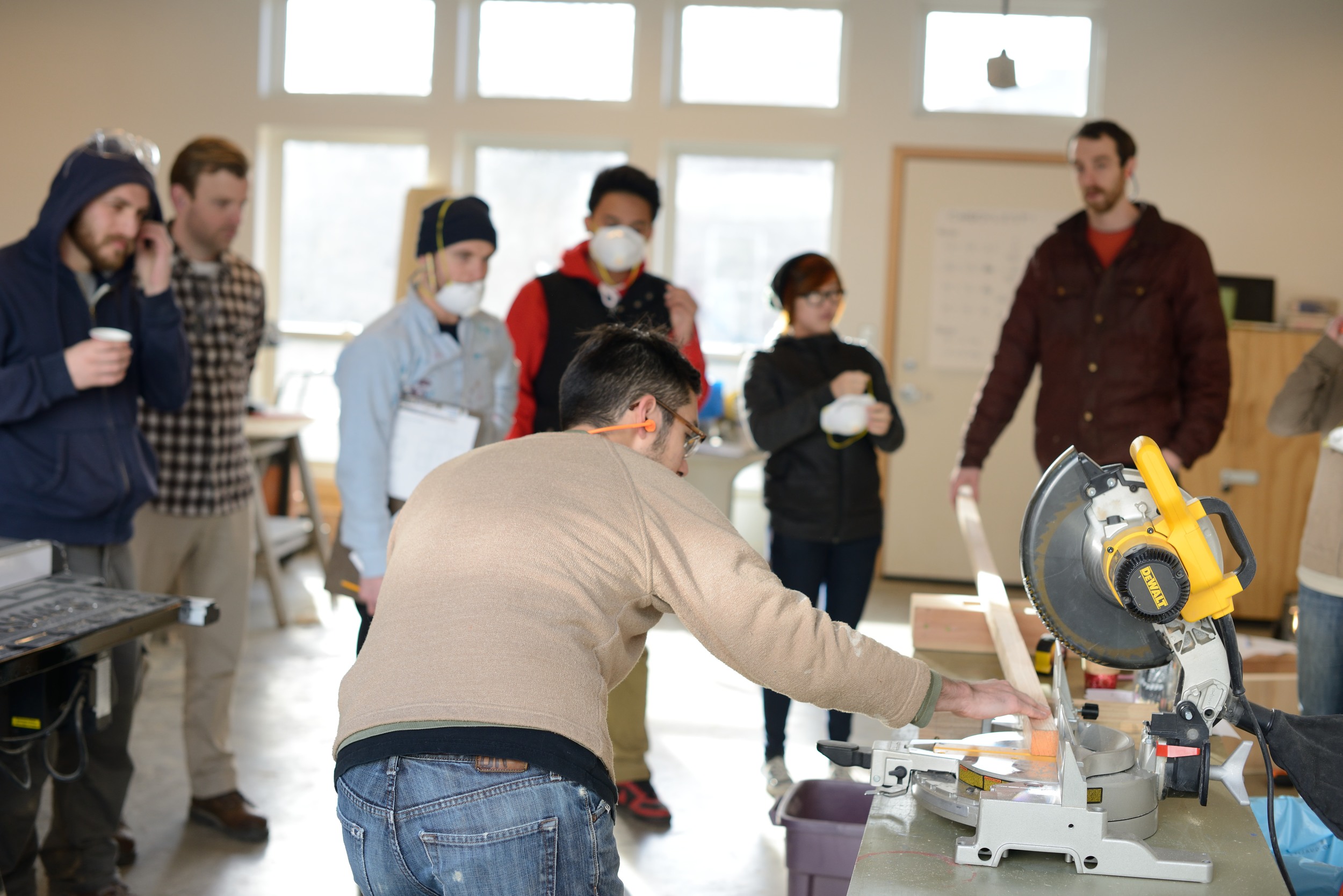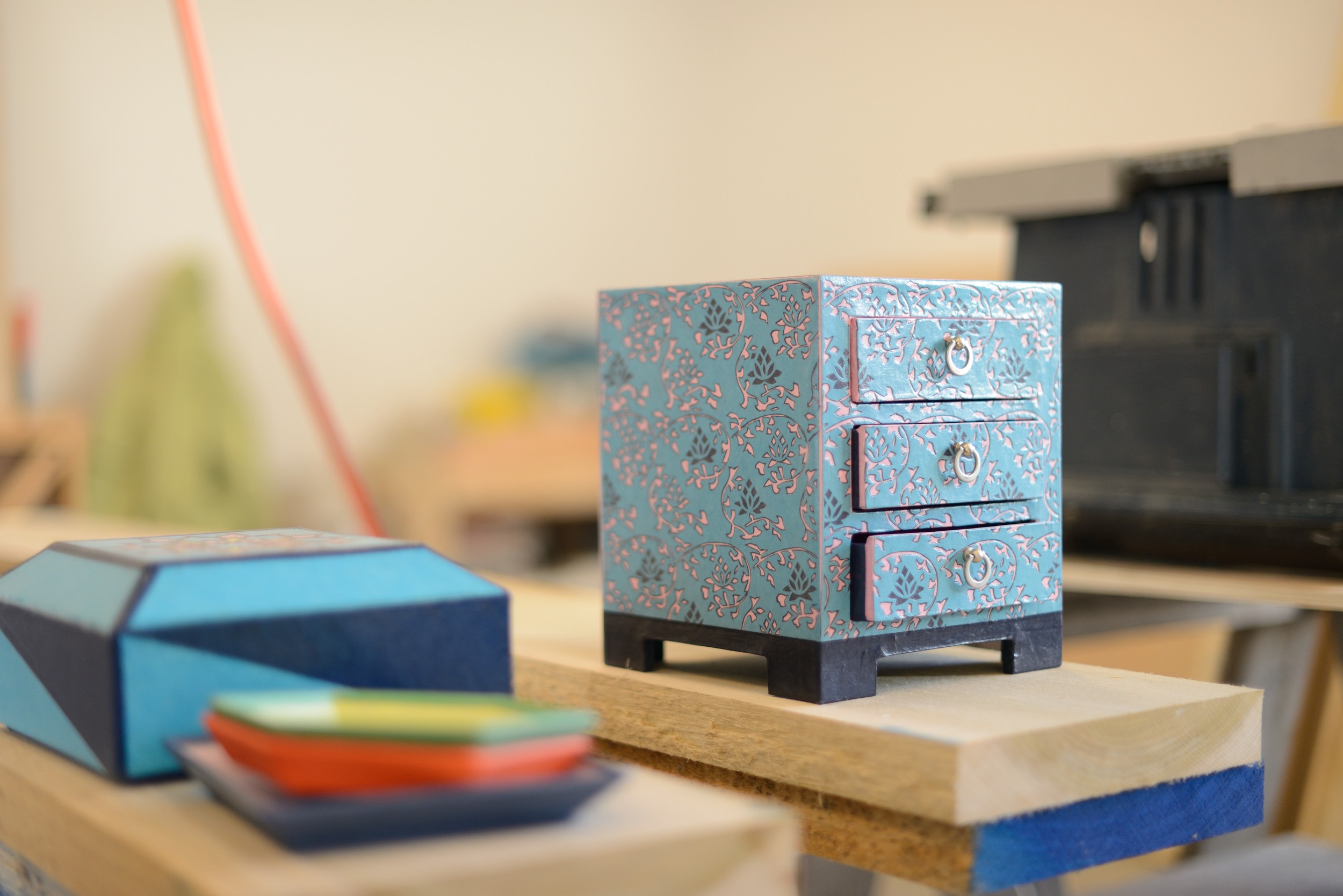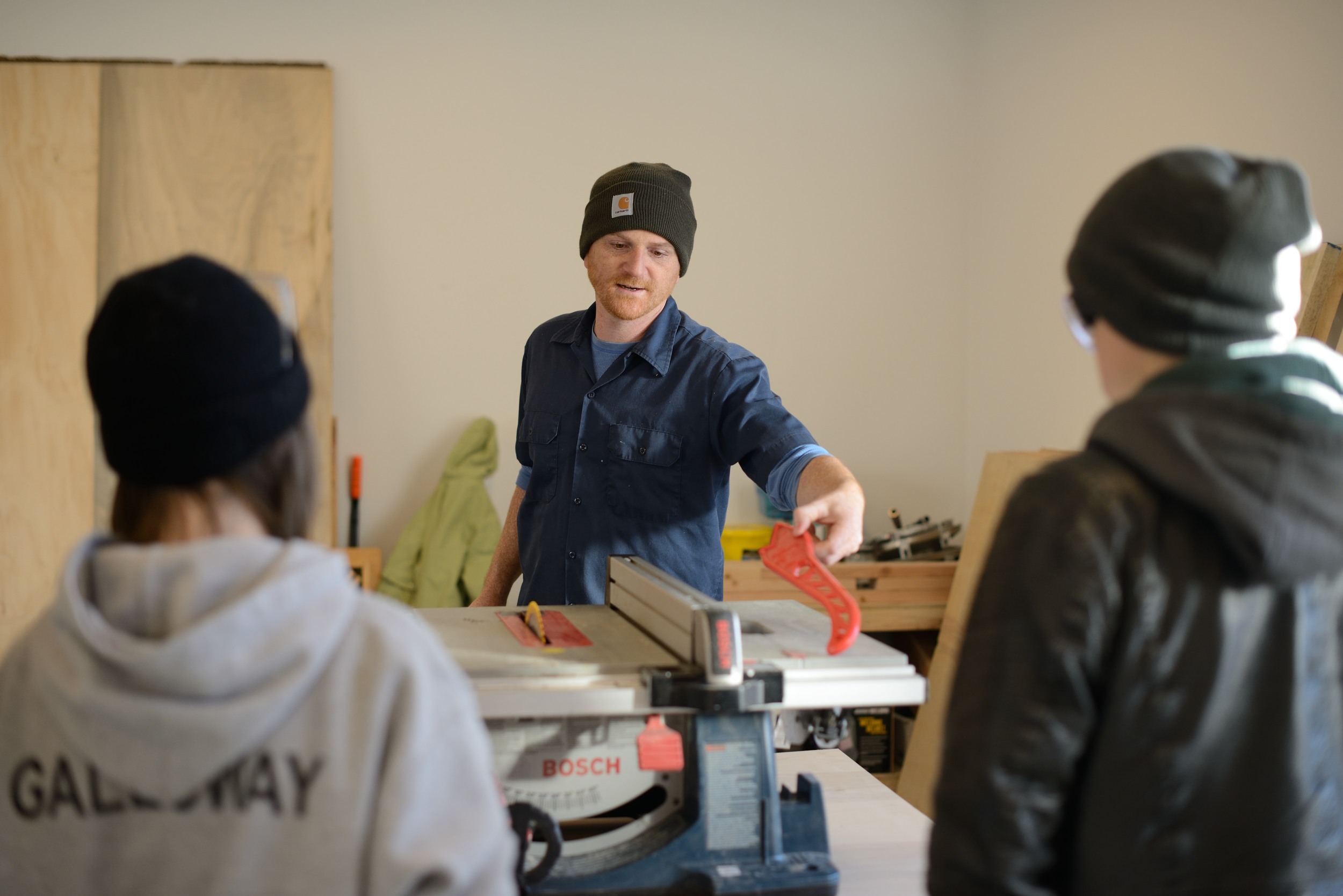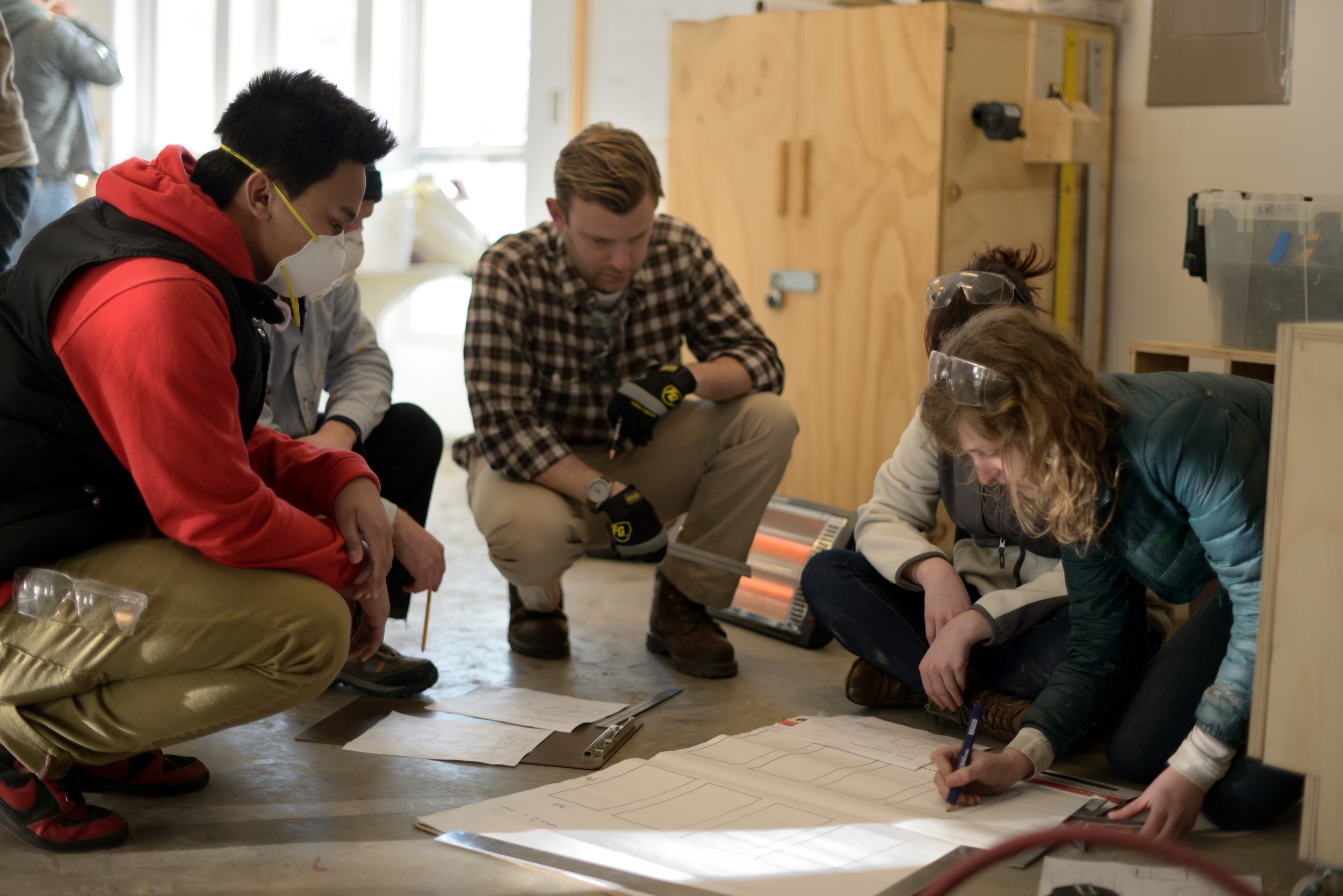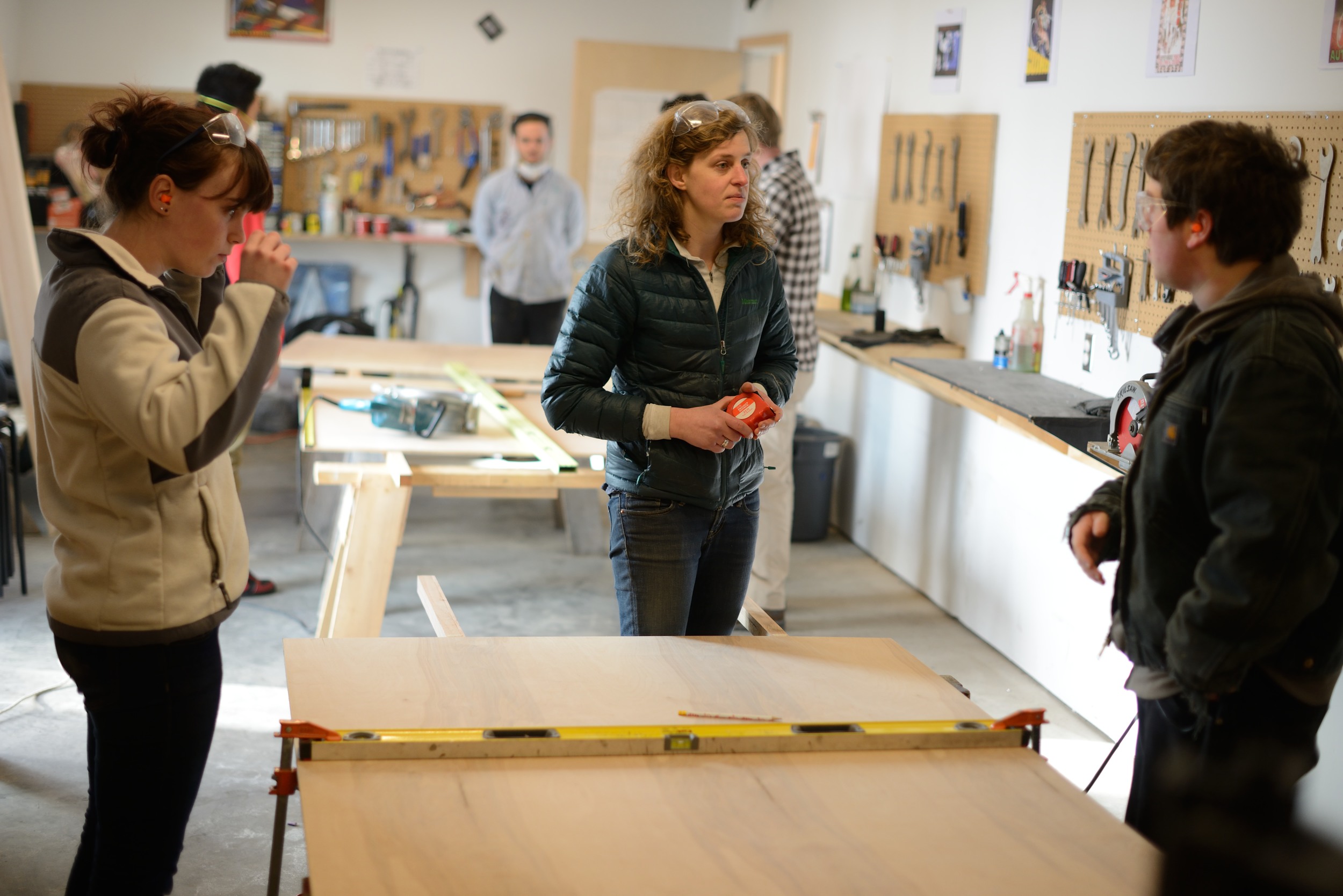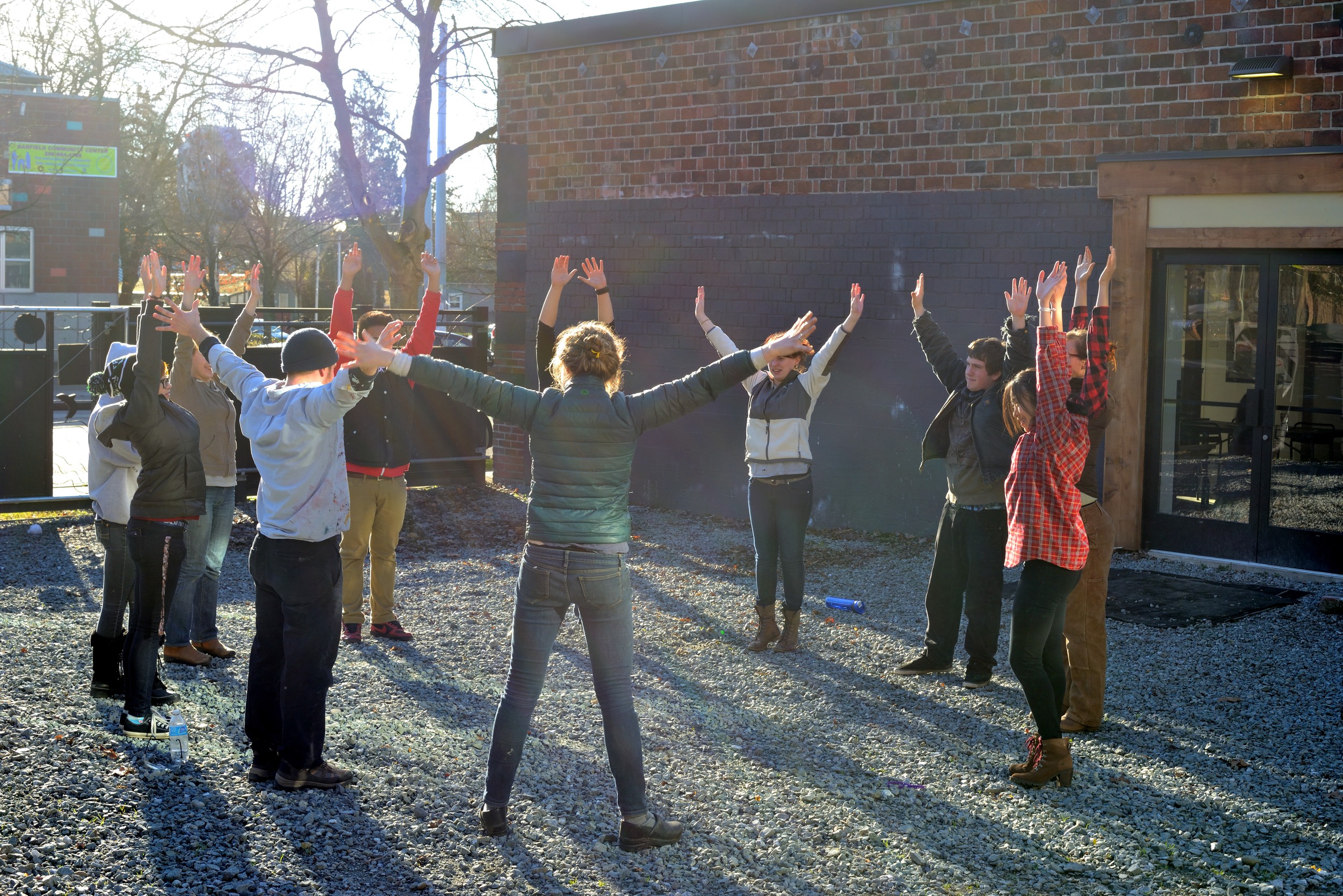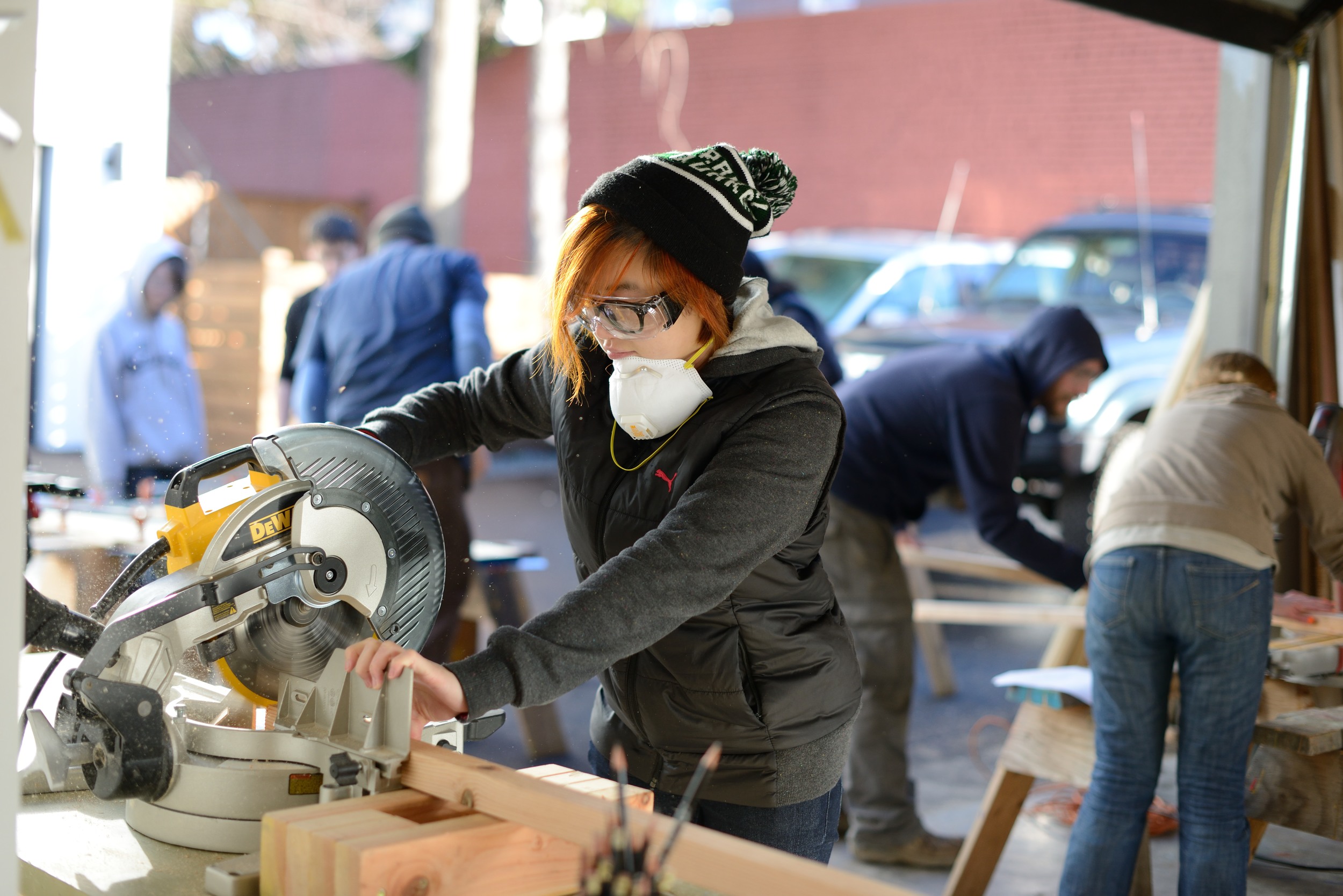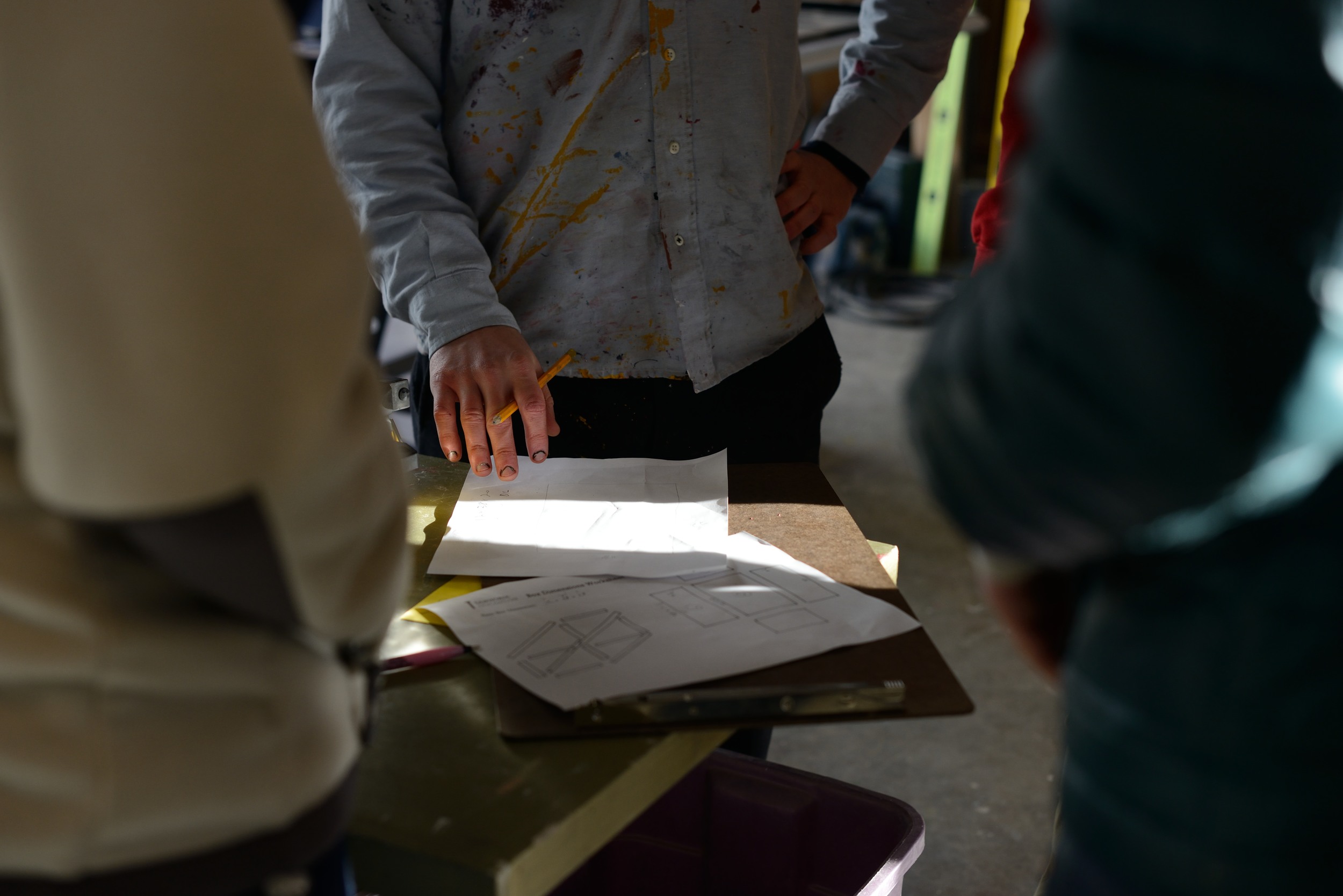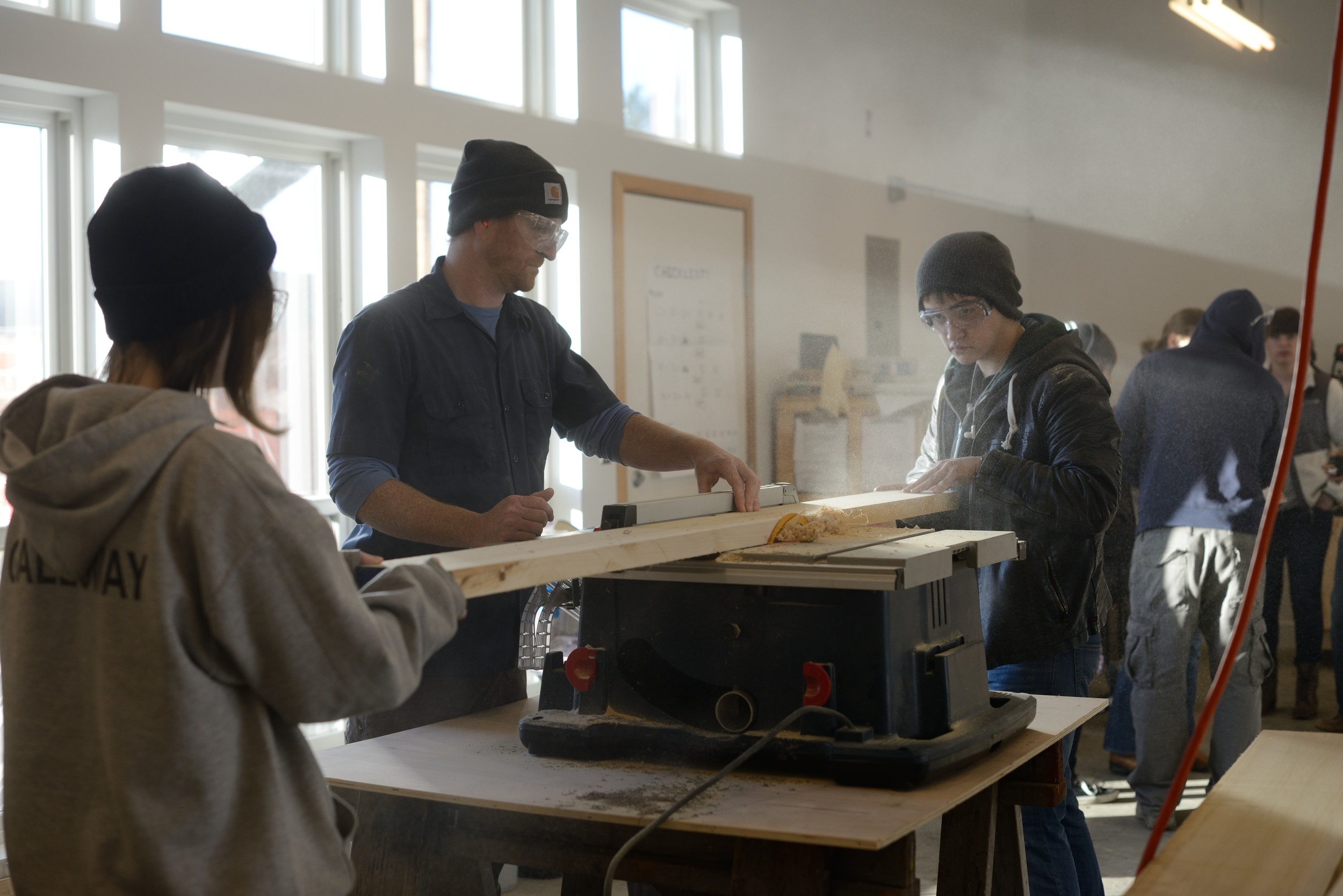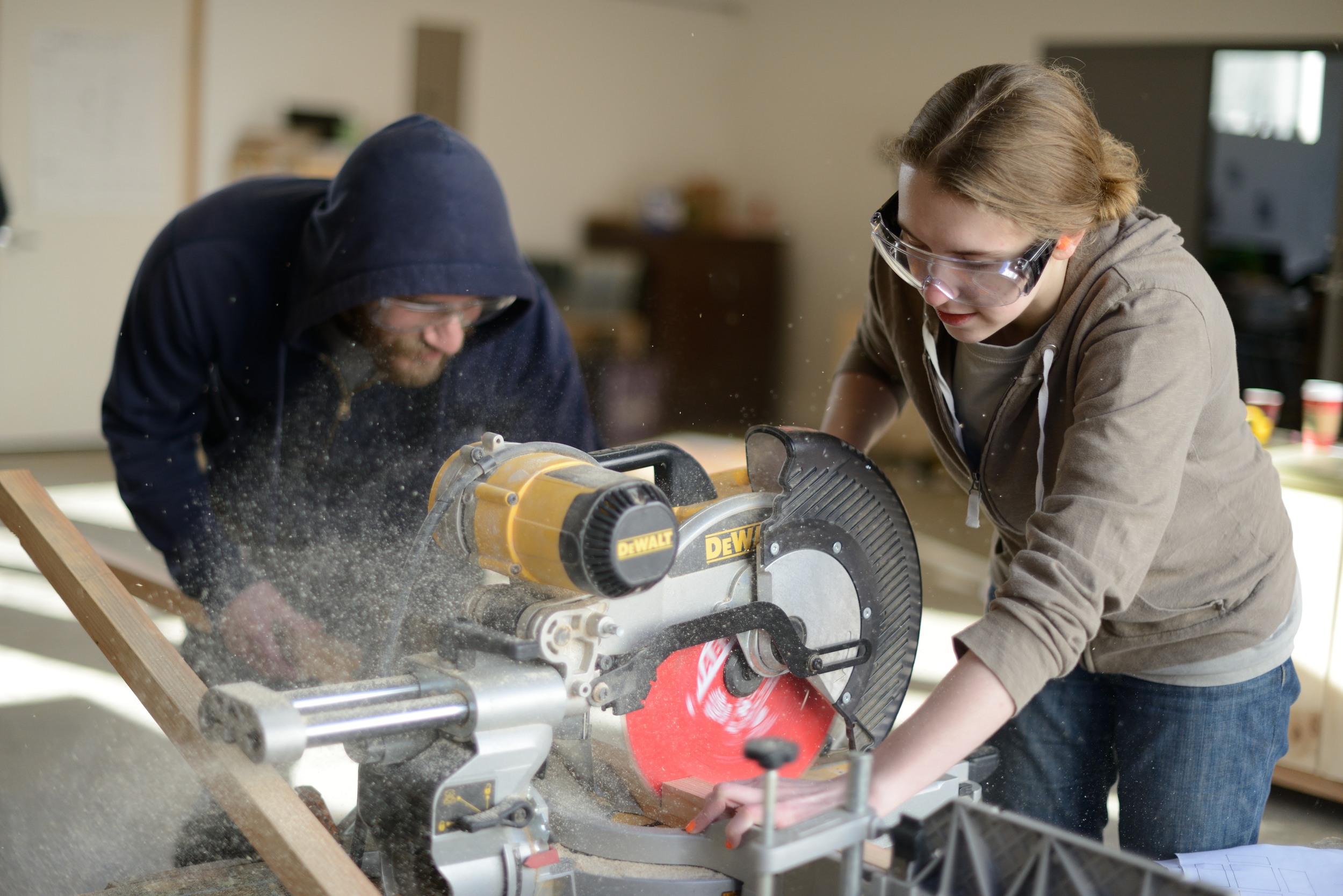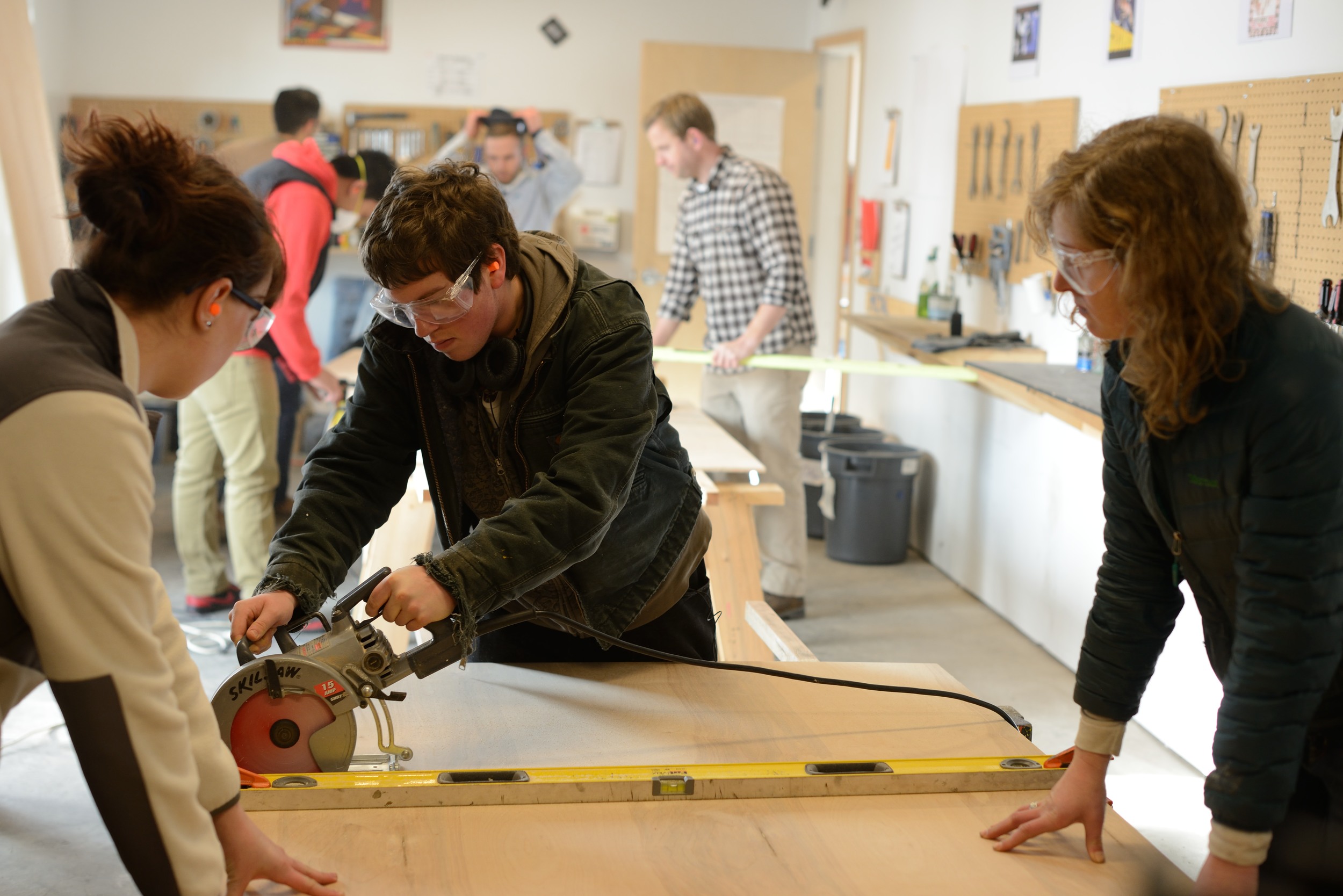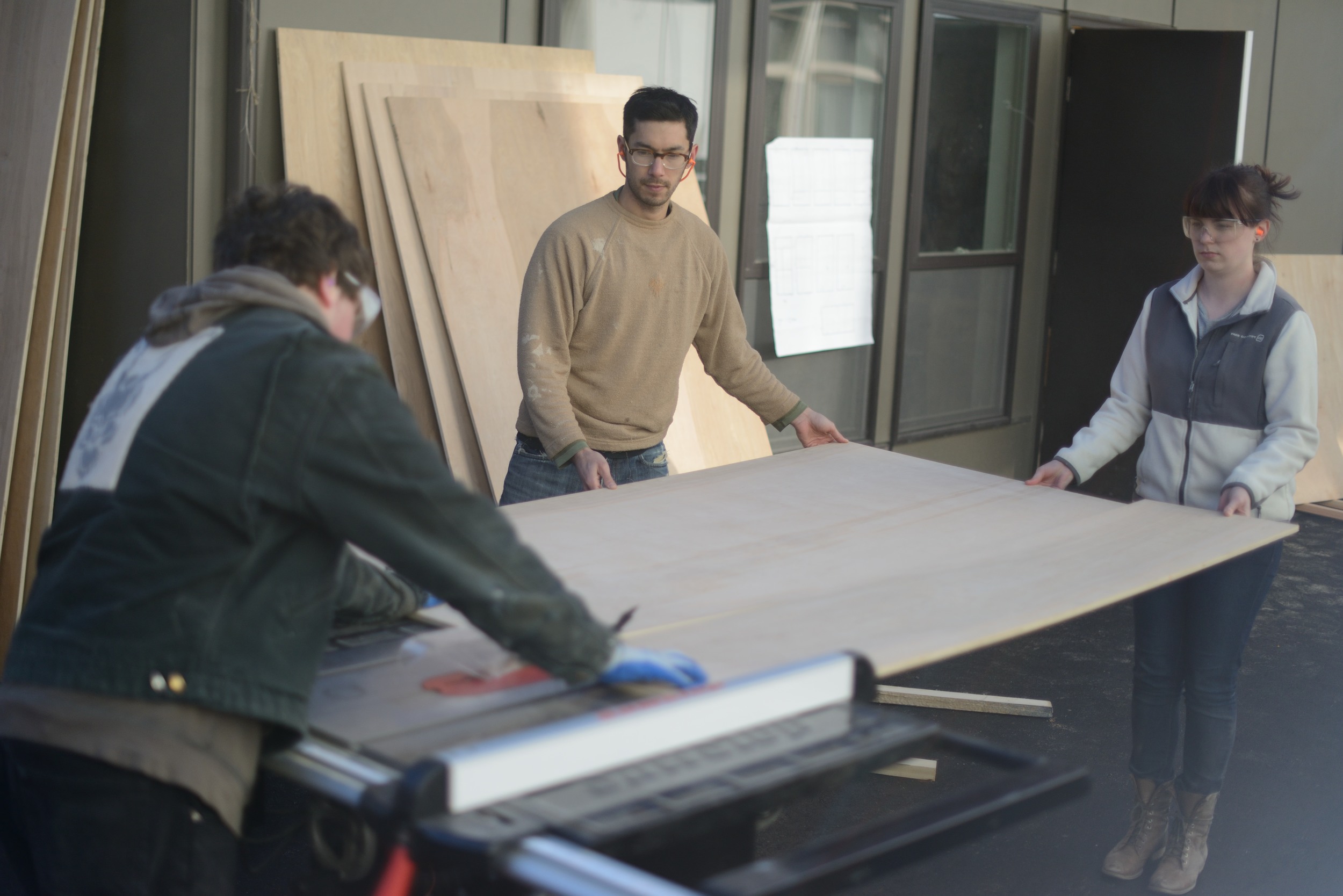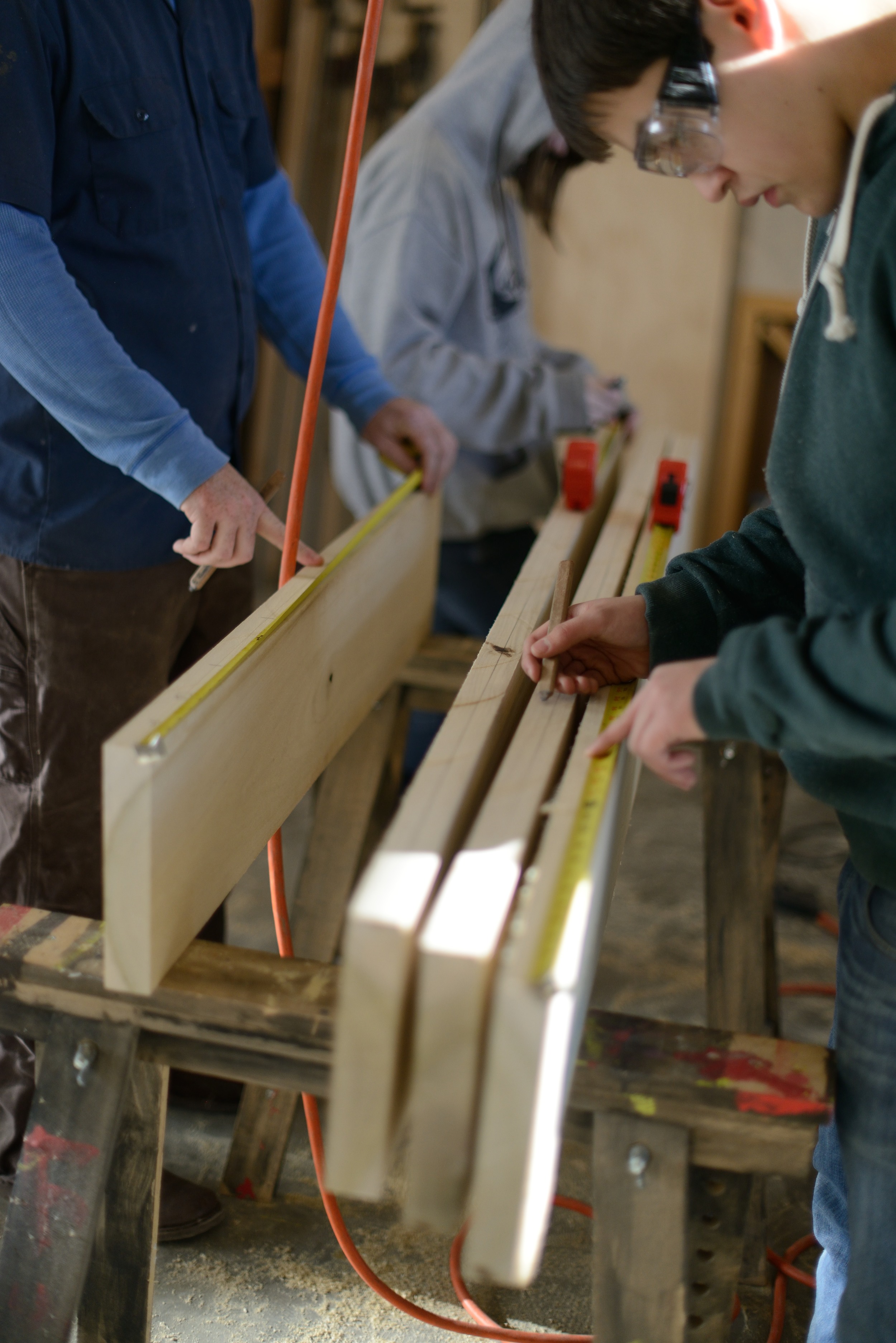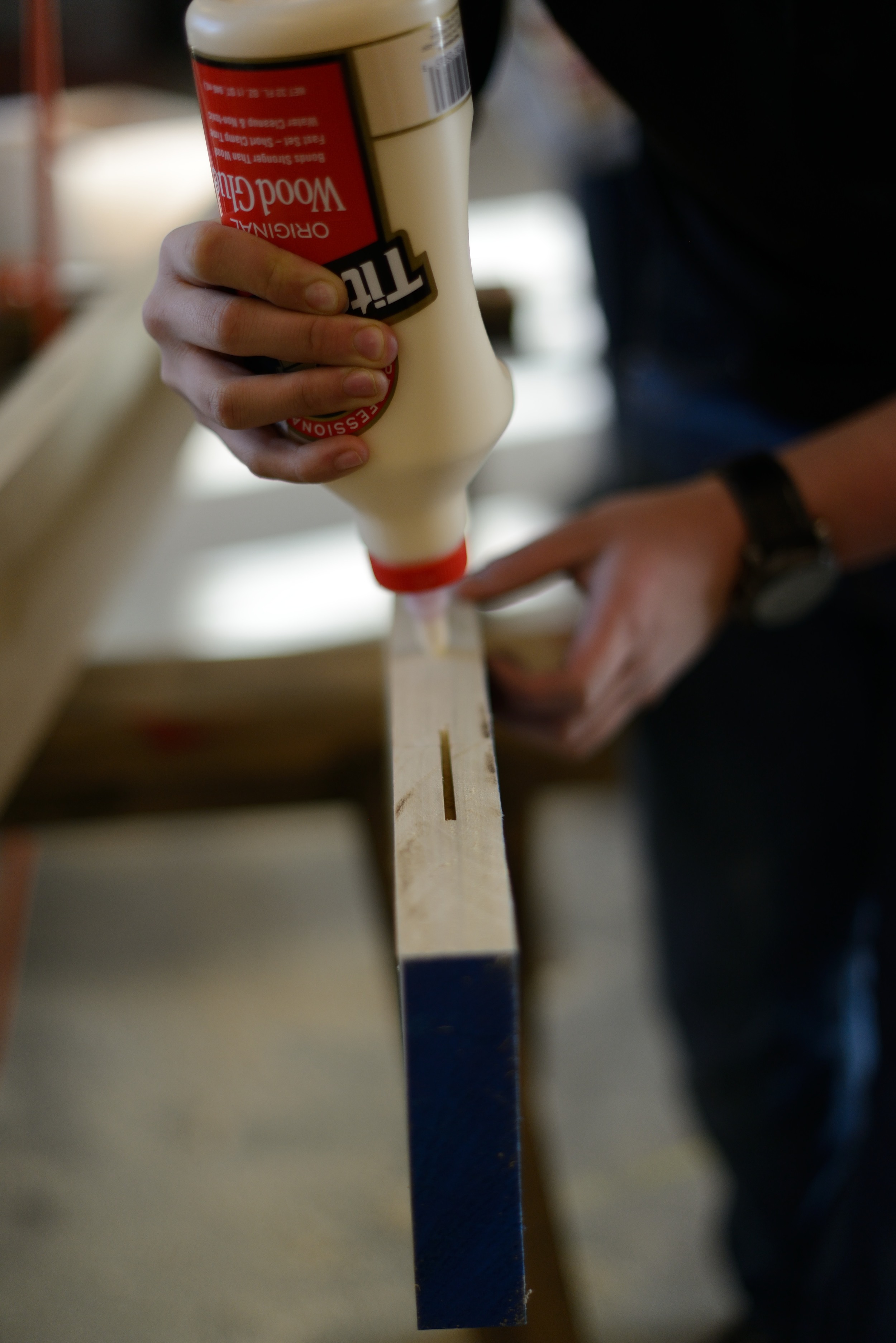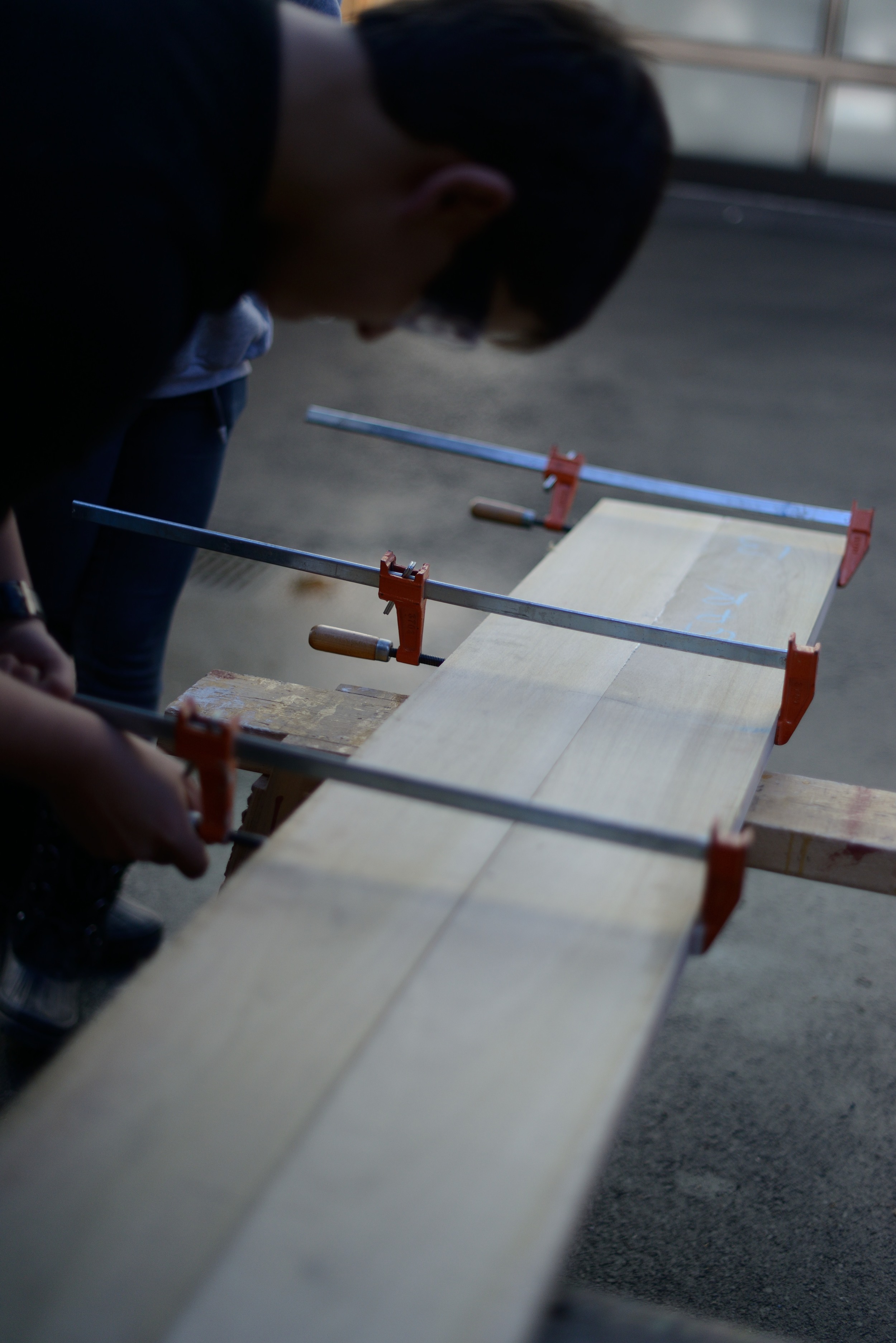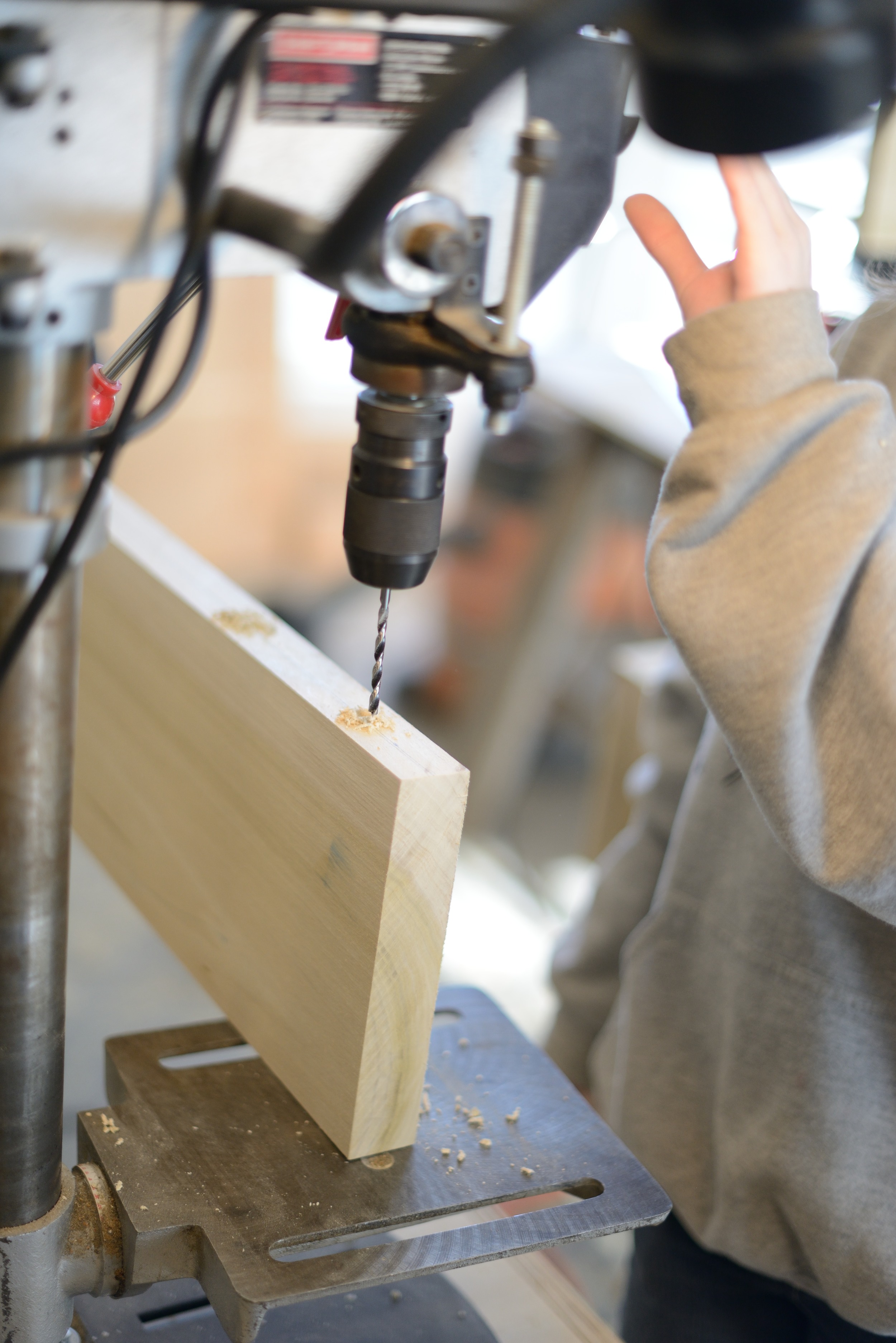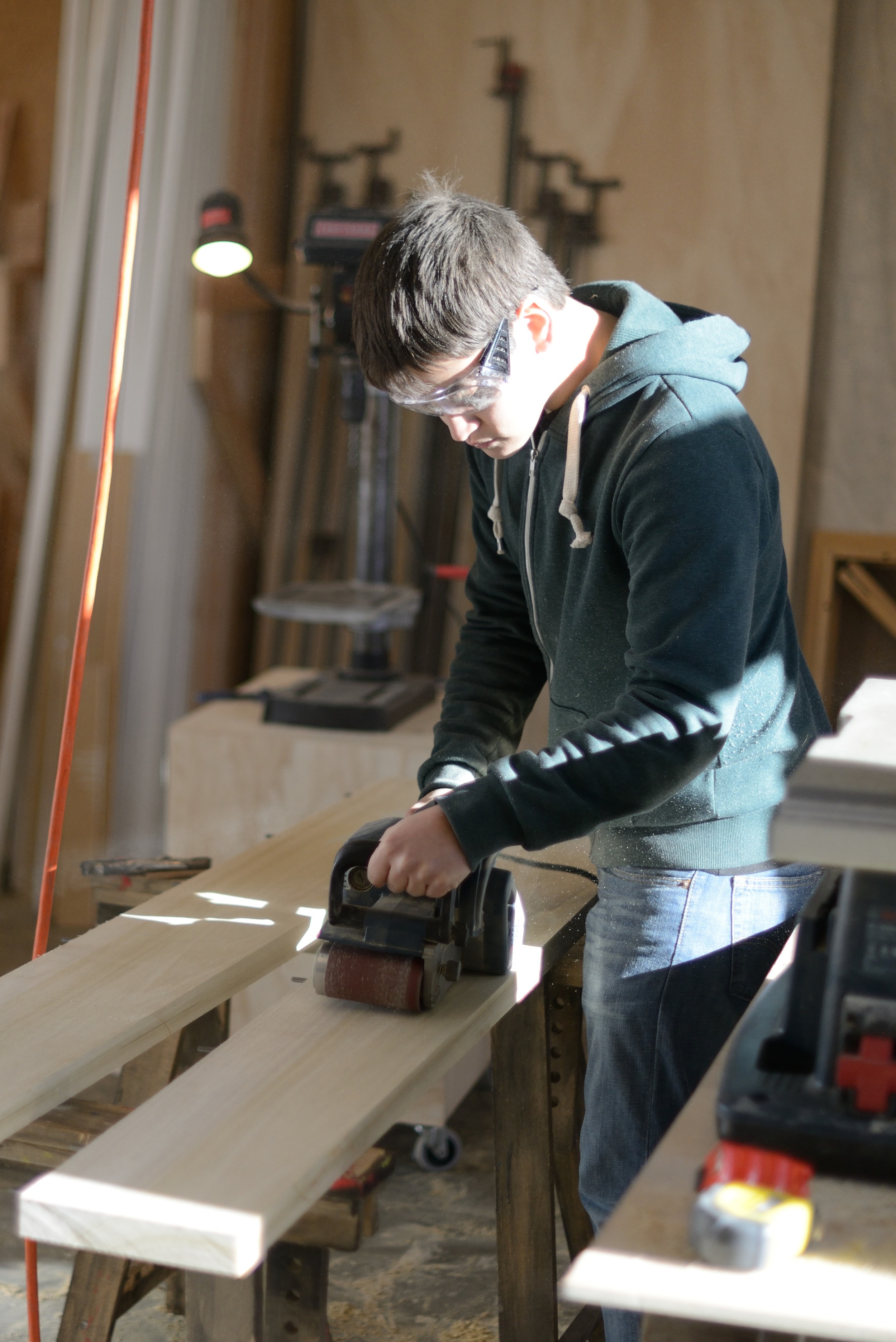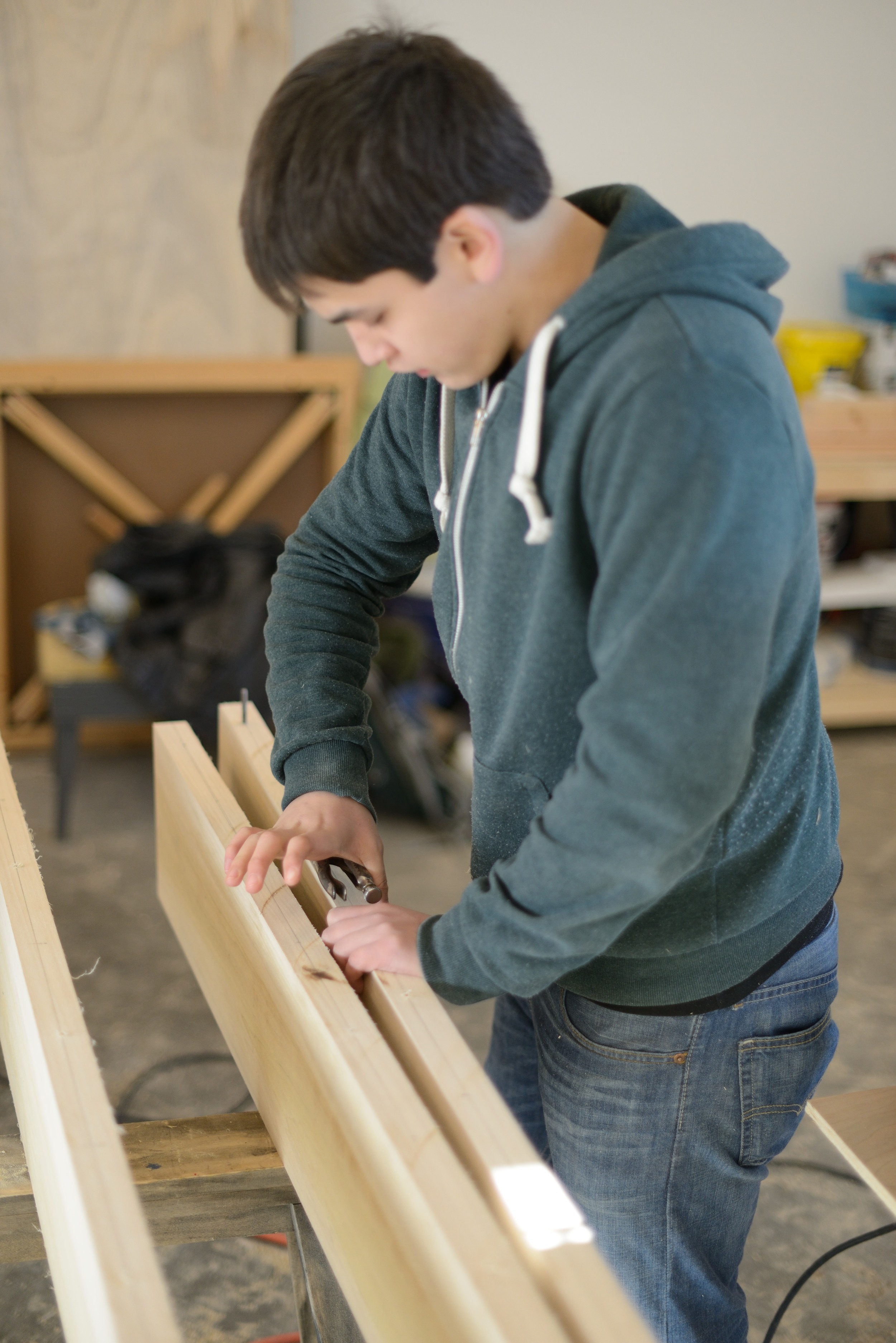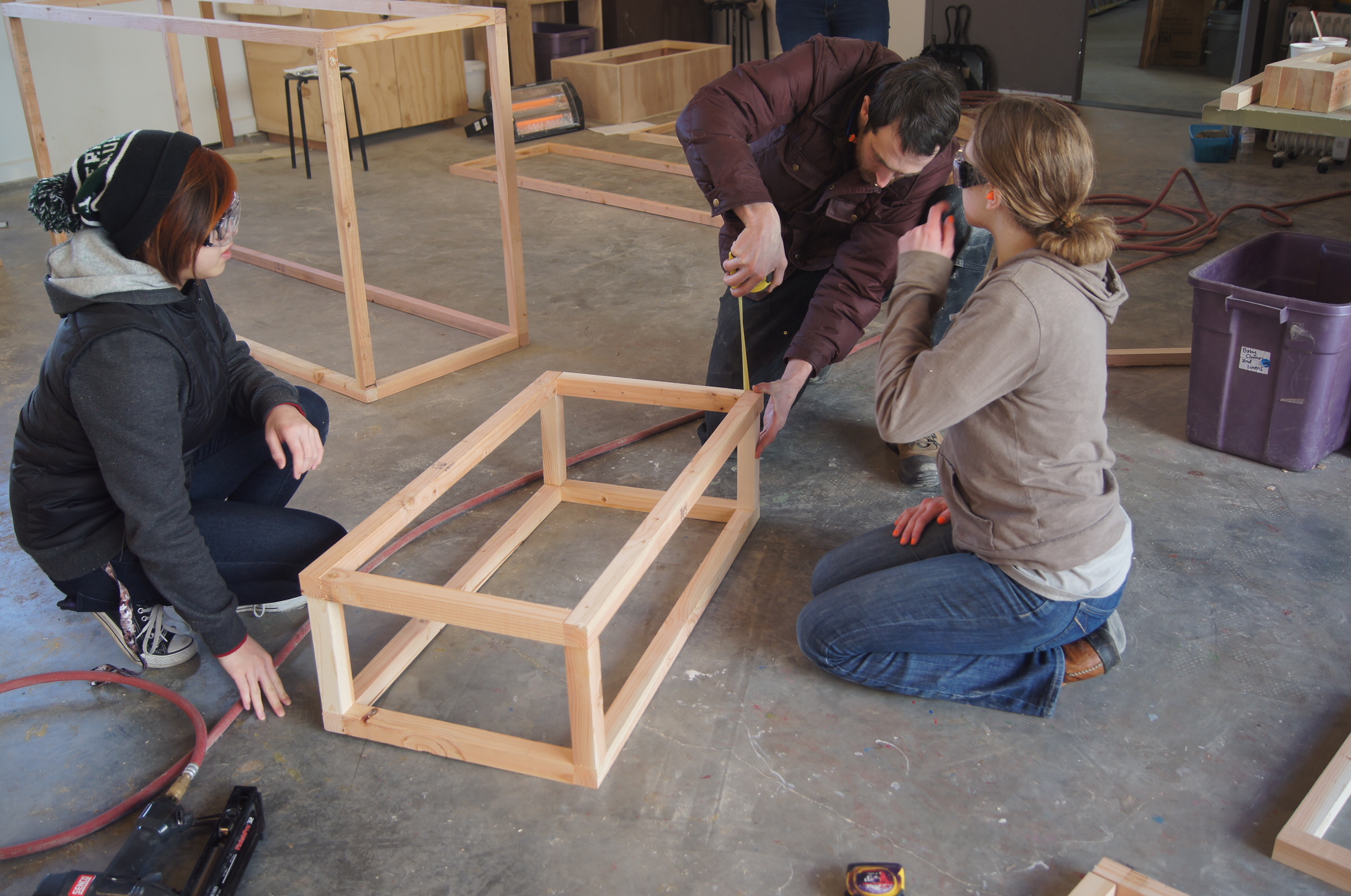The top example of the above two images shows a concrete deck above a series of continuous, open garages, its length emphasized by an delicate projecting concrete shelf and almost a dozen concrete columns. The garage has a rawness that most would find offensive if it were on the street, but in the alley its gently arcing form elicits admiration (not to mention the additional grace imparted by the quite transparent guardrail on top, unfortunately verboten by today's building codes). The second image is an interesting counterpoint to the first, with each of the garage doors forming a unique identity for its contents, safely held from view. The gentle stepping of the openings imply a segmented diagonal at the door heads, mirroring the gentle rise of the alley paving, while the scalloping of the concrete at the garage door thresholds is formed as if from the lapping of waves on a beach. It is hard to believe any designer could have consciously arrived at such an elegant composition; affirming the latent beauty to be revealed in the most functional of solutions.
Another noteworthy, similar quality exists where a more regular ordering has been compromised due to the lack of stewardship inherent in the alley environment. As I have previously written, alleys do not elicit the care that our streets do being as they are more private and utilitarian. This shift in our expectations of decorum between public and private realms allows alleys to suffer longer periods of inattentiveness, as pictured below, and often leads to rugged beauty that one would be hard pressed to consciously create.































